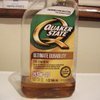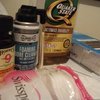Electric Head
Well-known member
- Joined
- Jul 16, 2010
- Messages
- 81
- Reaction score
- 54
I see a lot of posts about people tinkering inside their revolvers, and am getting the impression some people are in there quite often.
How often do you think a user should be getting inside the gun to clean and re-lubricate?
I previously thought someone without the interest of the internals (someone who just likes to shoot) should never need to get in there.
I would think even smiths or home smiths shouldn't be taking the side-plate off very often, but how often is often?
For a gun shot regularly (two or three times per month, 50+ rounds per outing), I don't believe you'd need to get in there any more than once in three to five years. (This gun would also be externally cleaned and re-lubed every shoot.)
But I don't know, I'm no expert, and I like to learn.
What is your opinion on the matter.
For that matter, what about removal of the cylinder for general cleaning? My belief is that it shouldn't be removed for cleaning for the same reason that a side-plate shouldn't be removed often - wear on the screws and plate fit.
Secondly, and closely related: What is the best internal lubricant, and cleaning & lubrication technique to provide the best long-term internal cleanliness and lubrication? I'm talking types of lubes, amounts, etc.
How often do you think a user should be getting inside the gun to clean and re-lubricate?
I previously thought someone without the interest of the internals (someone who just likes to shoot) should never need to get in there.
I would think even smiths or home smiths shouldn't be taking the side-plate off very often, but how often is often?
For a gun shot regularly (two or three times per month, 50+ rounds per outing), I don't believe you'd need to get in there any more than once in three to five years. (This gun would also be externally cleaned and re-lubed every shoot.)
But I don't know, I'm no expert, and I like to learn.
What is your opinion on the matter.
For that matter, what about removal of the cylinder for general cleaning? My belief is that it shouldn't be removed for cleaning for the same reason that a side-plate shouldn't be removed often - wear on the screws and plate fit.
Secondly, and closely related: What is the best internal lubricant, and cleaning & lubrication technique to provide the best long-term internal cleanliness and lubrication? I'm talking types of lubes, amounts, etc.
Last edited:


